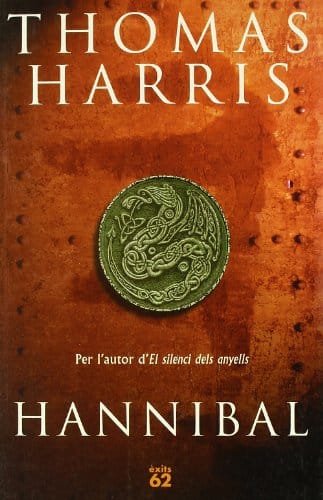Hannibal Barca: Master Strategist of the Ancient World
Discover Hannibal Barca's daring tactics, epic battles, and enduring legacy in this deep dive into the Carthaginian general's life and strategies.

Introduction
Few names in military history evoke as much awe as Hannibal Barca, the Carthaginian commander who marched war elephants over the Alps and brought Rome to the brink of collapse during the Second Punic War. More than two thousand years later his audacious strategies are still dissected in war colleges, boardrooms, and popular culture. This article explores Hannibal’s life, his most famous campaigns, and the legacy that cements him as one of antiquity’s greatest tacticians.
Early Life in Carthage
Hannibal was born in 247 BCE to Hamilcar Barca, a celebrated general who fought in the First Punic War. According to ancient historians, the young boy swore a blood oath against Rome at his father’s behest, forever shaping his destiny. Growing up in Carthage—then a maritime powerhouse spanning North Africa, Spain, and parts of the Mediterranean—Hannibal was immersed in a multicultural environment that valued commerce, seafaring, and military prowess.
After Carthage’s defeat in the First Punic War, Hamilcar led an expedition to Iberia (modern-day Spain) to rebuild Carthaginian fortunes. Hannibal accompanied him, receiving a practical education in leadership, diplomacy, and guerrilla warfare. These formative experiences forged the adaptable mindset that later baffled Rome’s legions.
Rise to Command
When Hamilcar died in battle, command passed to Hannibal’s brother-in-law, Hasdrubal the Fair. Upon Hasdrubal’s assassination in 221 BCE, the army unanimously elected 26-year-old Hannibal as commander in chief. He quickly consolidated power, winning loyalty through charisma, shared hardship, and a proven willingness to fight alongside his troops. Within two years he subdued the rest of Iberia, amassing soldiers, silver mines, and an eclectic coalition of African, Iberian, and Celtic warriors that would later shake Rome.
The Fateful Crossing of the Alps
In 218 BCE Hannibal initiated the Second Punic War by besieging the Roman-allied city of Saguntum. Anticipating Rome’s naval superiority, he opted for an overland invasion. Historians estimate that 50,000 infantry, 9,000 cavalry, and about 37 war elephants embarked on the arduous trek from Spain through southern Gaul and over the snow-capped Alps. The journey cost nearly half his men, but it also achieved strategic surprise; Roman commanders never imagined a foreign army would appear in northern Italy so swiftly.
Decisive Victories: Trebia, Trasimene, and Cannae
Hannibal’s first major clash with Rome came at the River Trebia, where he lured an overconfident consul into icy waters and crushed him between hidden cavalry wings. Six months later he set a gruesome ambush at Lake Trasimene, annihilating another Roman army and demonstrating unmatched mastery of terrain. Yet his magnum opus arrived in 216 BCE at Cannae. Using a double-envelopment maneuver, Hannibal turned a seemingly exposed center into a deadly trap that surrounded and slaughtered up to 50,000 Romans in a single day—still studied as the pinnacle of tactical perfection.
Strategic Genius Beyond the Battlefield
Hannibal combined tactical brilliance with psychological warfare. He released captured Italians to foment dissent, forged alliances with disaffected city-states, and spread rumors that Rome’s gods had abandoned her. He also maintained a flexible command structure, empowering subordinate leaders such as Maharbal to execute lightning raids. His expertise in multi-ethnic coalition management—coordinating Celtiberian slingers, Numidian horsemen, and African heavy infantry—foreshadowed modern combined-arms doctrine.
Rome Strikes Back
Despite Hannibal’s victories, Rome’s resilience proved formidable. Under generals Fabius Maximus and later Scipio Africanus, Rome adopted attritional tactics, avoiding pitched battles and severing Carthaginian supply lines. Scipio invaded Iberia and eventually North Africa, forcing Hannibal to withdraw from Italy after 15 years of campaigning. The two titans met at the Battle of Zama in 202 BCE; Scipio’s disciplined legions and Numidian allies finally defeated Hannibal, ending the war but not the legend.
Legacy and Influence
Hannibal’s military doctrines influenced leaders from Napoleon Bonaparte to George S. Patton. The phrase “Hannibal ad portas” (“Hannibal is at the gates”) entered Roman vernacular as a metaphor for impending danger. His daring use of mobility, intelligence gathering, and encirclement still shapes strategic studies. Even in defeat, his capacity to keep a superpower off balance for over a decade showcases the power of unconventional thinking.
Walking in Hannibal’s Footsteps Today
Modern travelers can trace Hannibal’s route through ruins in Cartagena, Spain, alpine passes near Col du Clapier in France, and battlefield museums at Cannae in Italy. Carthage’s archaeological park in Tunisia offers insight into the cosmopolitan city he fought to defend. These sites, combined with regional food and wine trails, create an immersive historical itinerary that blends culture, scenery, and ancient warfare.
Conclusion
Hannibal Barca stands as a timeless symbol of strategic audacity and relentless determination. From his blood oath in Carthage to the elephants on the Italian plains, his story captures the imagination of historians, soldiers, and travelers alike. Studying his campaigns reveals lessons on leadership, innovation, and the fine line between triumph and catastrophe—lessons as relevant in the twenty-first century as they were during the Roman Republic.